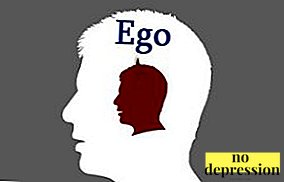Democritus called the needs of the main driving force through which humanity got the mind, language and thinking. Abraham Maslow packed all the needs into a pyramid more than half a century ago. Today, his theory is used in work, business, and criticized simultaneously. To learn how to use it to your advantage, you need to figure out how the Maslow pyramid is structured, what parts it consists of, and why the steps are arranged in exactly this sequence.
What is Maslow's Pyramid?
Maslow's Pyramid is a schematic depiction of all human needs, from the simplest and most pressing to the highest. Back in 1943, psychologist Abraham Maslow described the pyramid of values with one goal: to understand what motivates people to perform certain actions. Maslow himself only formulated this concept, and his pupils invented a graphic diagram.
Needs pyramid
Abraham Maslow (1908-1970), an American psychologist with Ukrainian roots, was one of the first to study the behavior of people from a positive point of view. Prior to this, all psychotherapy was limited to the study of mental disorders or behavior outside the norm. Together with the founders of gestalt therapy, Maslow formulated the main techniques of psychoanalysis, which psychotherapists use in their sessions.
What does Maslow's pyramid look like?

Usually the pyramid is depicted as a triangle:
- The lowest and widest part - These are the physiological needs of the body. Our body is historically programmed to meet the need for food, quenching thirst, sleep, sex. If it wants to eat or go to the toilet, then the brain cannot think about anything else.
- Second stage - the need for security. Like physiology, safety is sewn into our DNA back in the times of man-ape. The life tasks of our ancestors were simple: 1. Eat. 2. Multiply. 3. Avoid the danger of being eaten. They helped mankind to survive, so the need for security is also called the “hit or run” physiological response.
- Third stage - the need for love and belonging to the group was also laid in the days of the cave dwellers, when it was impossible to survive alone. But just for living in a group a person needed a new skill. This is willpower. If you do not connect it in time, you can easily be punished and be expelled from the cave or in modern conditions, be blocked in the social network.
- Fourth and fifth - the need for respect and knowledge. They are so interconnected that they are bundled. Indeed, among scientists and inventors, for example, the need for knowledge is much stronger than in recognition. For example, Gregory Perelman all his life argued and proved the theory of Poincaré, and then refused the prescribed award and all titles.
- Sixth Stage - aesthetic needs. These are museums, exhibitions, music, dances, hobbies, everything that brings pleasure to the soul and forms the intellect.
- Seventh stage - the need for self-actualization or the desire to unleash their spiritual potential. Here, too, is not all clear. According to the logic of the pyramid device, this need must be realized in the last place. But after all, the monks seek the realization of spiritual potential precisely by pacifying the rest of their needs.
Disputes over the pyramid of Maslow
Maslow's needs pyramid is more often mentioned today. not in connection with psychology, but with trade. It is used by marketers and sales representatives of all ranks. On the profile they say: if you “beat” on the most basic needs of a person, you will certainly be able to motivate him to purchase a product or service. But not everything flowed as it seems.
The controversy over Maslow’s needs pyramid does not abate. The first thing that makes this theory doubt is the story of how Maslow himself selected people for research. At first he was looking for the perfect people. But did not find. After that, the harsh conditions of selection gradually softened, and managed to select a sufficient number of volunteers for testing. But they were all close to the concept of the "ideal man." In practice, these people are few. And practice, as is known, is the criterion of truth.
The second thing that worries modern psychologists is "inverted pyramid“when self-improvement and self-actualization is at the forefront. When a person puts a certain ideal in front of him, he strives for it and does not even understand why he needs all this. And the“ medical reference book effect ”works: you read the reference book and immediately find all the diseases in yourself Only today not the reference books are read, but the incredible stories of reincarnation, achievement, take-off. And they seem to themselves to be imperfect, unworthy of something good. And only infinite self-improvement will help to correct “imperfection”.
Australian diplomat and scholar John Burton (1915-2010) developed and promoted another vision of Maslow's pyramid. He saw a person as a whole person, for whom all needs are equally important. That is, none of the needs are considered lower or higher, needs cannot be excluded, ignored, or be the subject of a transaction or agreement.
But any theory is only a theory. The pyramid will remain a beautiful picture, if it is not clear how to apply it in real life.
How to "attach" the pyramid of human needs in everyday life
The following are stories of practicing psychotherapists and career strategy counselors about how Maslow's pyramid of needs can be used in everyday life.
Example 1. Advertising agent
Not only advertising agents can use the pyramid of needs. We can understand ourselves and understand why we make certain purchases. After all, we often buy not an iPhone, but the opportunity to join the "club of the elect" (belonging to a group), we dream not about a fur coat, but about the possibility of being cooler than a rival (the need for recognition). Such introspection will help not only to understand oneself, but also to learn how to resist persistent advertising and unreasonable spending.
Example 2. Hungry husband
In fact, this scheme was described in fairy tales: “Well, feed a good young man, give him a drink, take a bath in the bath, and then ask questions.” To paraphrase: satisfy the basic needs according to Maslow's pyramid and then load your husband with clever talk. But this rule does not apply only to dinner. Often we work, we forget about lunch and rest, we start to solve global problems with a headache, and then we are surprised that “something doesn’t cook something”. Sometimes it's enough to just have a snack or sleep for half an hour and the brain will reboot on its own.
Example 3. Career changes
The network today publishes many stories about the importance of self-actualization in the profession "at the call of the heart." It seems that it is worthwhile to abandon the hated work and the soul will unfold, ideas will start beating the fountain. And no. The network publishes only success stories, and the failure stories for the most part remain behind the scenes. People quit with the desire to change their lives. A month later, they face a problem: a favorite business does not bring the expected income and in one day there is simply nothing to buy food. And here the panic begins. And in a panic to create somehow fails. Therefore, career counseling consultants advise you to find a job that will generate a steady income and will leave time for your favorite business. If to rephrase: when there is nothing (physiology) and there is nothing to pay for an apartment (safety), then the favorite thing is not happy.
Example 4. Difficult teenager
For a teenager is especially important to feel belonging to the group. Therefore, all these teenage movements, groups in the network, correspondence, secret societies arise. Some parents act radically - prohibit. But to forbid the child to communicate means to deprive him of his basic need. Therefore, psychologists advise not to prohibit, but to substitute groups. For example, instead of playing online, interest a teenager in sports. Then another group will come to replace one group, and it will not be necessary to prohibit anything.
Example 5. The ideal partner
To query in the search engine "How to choose a partner" The system offers hundreds of references for testing. Who makes these tests is not clear. But in the pyramid of needs, everything is simple and clear. First you can just look at it yourself and understand what you want from life. Then you can talk about the needs with your chosen one. Someone always wants to go to exhibitions and refresher courses, and someone to eat and sit on social networks. Maybe it is better to discuss the difference in tastes in the early stages than to later become disillusioned with relationships and family life?
Conclusion: the Maslow pyramid is another way to understand the jungle of our desires and real needs.



